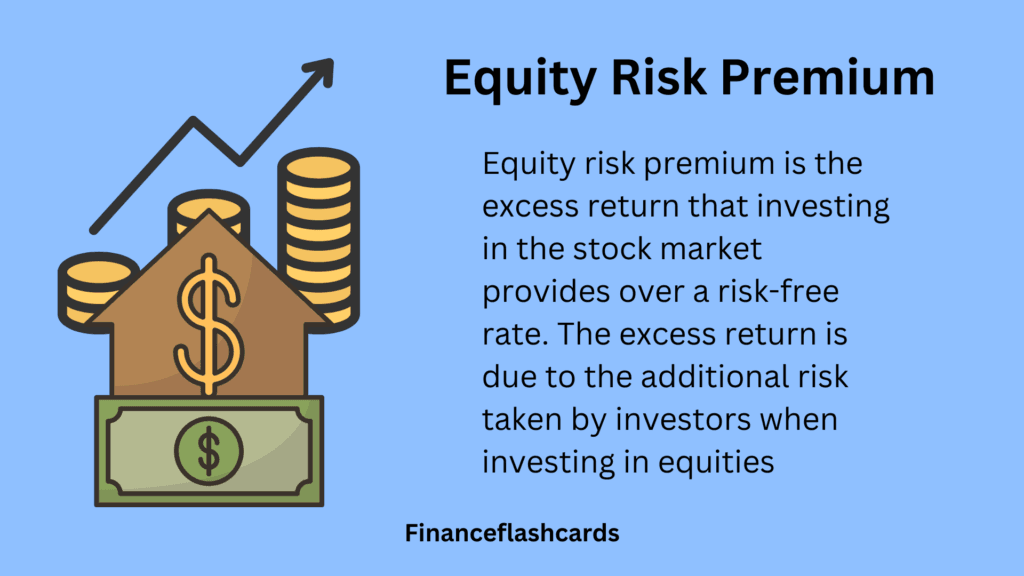Equity risk premium is the excess return that investing in the stock market provides over a risk-free rate. The excess return is due to the additional risk taken by investors when investing in equities
Table of Contents
What Is Equity Risk Premium?

Understanding Equity Risk Premium
A rational investor believes that an increase in risk associated with an investment must be accompanied by an increase in the potential reward for the investment to remain viable.
How To Calculate ERP
- Ra = expected return on investment in a or an equity investment of some kind
- Rf = risk-free rate of return
- βa = beta of the stock
- Rm = expected return of the market
So the difference between the expected return of the market(Rm) and the risk-free rate of return (Rf) is called Equity risk premium[Rm-Rf].
Equity risk premium is affected by economic activity and mostly by the country and its default structure. Inflation also plays a major factor in risk-free rates, ultimately affecting the market premium (Rm-Rf).
1. Macroeconomic Factors
Economic Growth Expectations: Higher anticipated economic growth typically leads to a lower ERP as it suggests a stable environment for earnings growth and reduced uncertainty.
Inflation and Deflation: Moderate inflation is beneficial for equities, leading to a lower ERP.
High inflation or deflation increases uncertainty, pushing the ERP higher.
Interest Rates: Low interest rates reduce the opportunity cost of investing in equities, often reducing the ERP.
High interest rates, on the other hand, increase ERP due to higher competition from safer fixed-income investments.
Fiscal and Monetary Policies: Expansionary policies can lower ERP by fostering economic stability.
Contractionary policies may increase ERP due to higher perceived risks.
2. Market-Specific Factors
Market Volatility: Increased market volatility raises the uncertainty in returns, leading to a higher ERP.
Liquidity: Less liquid markets tend to have a higher ERP because investors require compensation for the difficulty in buying or selling assets.
Corporate Earnings: Strong, consistent corporate earnings reduce ERP by signaling stable investment prospects.
Market Sentiment: Bullish sentiment often lowers ERP, while bearish sentiment increases it.
Equity Valuations: High valuations (e.g., high P/E ratios) may suggest lower future returns, potentially leading to a lower ERP.

